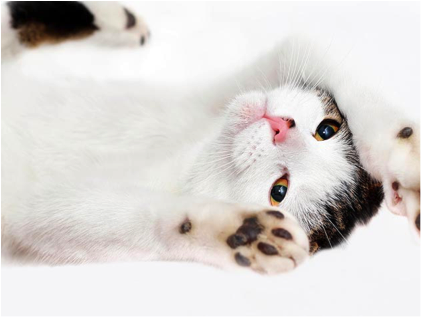 Feline leukemia virus (FeLV) is a common, highly contagious, widespread virus that causes more deaths in the cat population than any other organism. FeLV is transmitted by many different ways: saliva of infected cat enters the nose, eyes or mouth via grooming or cat fights,, contaminated urine, blood, or feces, and mother to fetus. Nursing kittens can become infected from contaminated milk if mom is infected with the virus.
Feline leukemia virus (FeLV) is a common, highly contagious, widespread virus that causes more deaths in the cat population than any other organism. FeLV is transmitted by many different ways: saliva of infected cat enters the nose, eyes or mouth via grooming or cat fights,, contaminated urine, blood, or feces, and mother to fetus. Nursing kittens can become infected from contaminated milk if mom is infected with the virus.
There are no symptoms that are specific for FeLV infection. The bone marrow can become compromised causing anemia (low red blood cell count), white blood cell and platelet disorders and numerous immune-mediated diseases. Tumors, like lymphoma, can be associated with FeLV. Other health problems include: respiratory, oral and skin infections, digestive and urinary tract problems. Some disease seen in FeLV positive cats include: Feline Infectious Peritonitis, Hemobartonellosis, and Toxoplasmosis.
Testing for FeLV is highly recommended for ALL cats. The test is affordable and aids to diagnose FeLV-related illnesses, detect subclinical infections, and identify FeLV infections in multi-cat households.
Vaccinating against feline leukemia reduces the risk of FeLV infection, therefore vaccinations are highly recommended. Vaccinations are administered at 8 and 12 weeks of age. Then annual booster vaccinations are given. To further prevent the spread of FeLV healthy cats should avoid contact with tray cats, free roaming cats, and cats that are not vaccinated or tested for feline leukemia.

